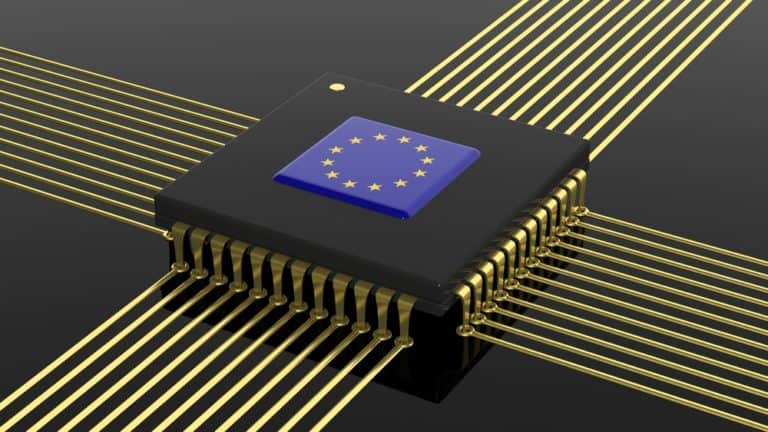The European Union is going to invest 43 billion euros in the production of computer chips. The so-called Chips Act is meant to ensure that the EU can secure a 20 percent market share. Can Europe compete with its global competitors?
The three aims of the Chips Act are as follows: to build competitive technological centers, to secure its own supply of chips and to construct a crisis plan that monitors signs of trouble to be prepared for a legislative response. Crucially, these pointers betray the plan’s Covid-era vintage.
Global chip production has navigated troubled waters over the past few years. The pandemic caused huge shortages, causing costs to skyrocket and shipping dates to slip further and further away. Plenty to give EU lawmakers a mighty headache, then. In early 2022, The European Commission came up with an answer: the Chips Act. With it, the bloc hoped to at least avoid being reliant on chips from China, Taiwan and the US. Back when the plan was afoot, we too believed the shortages would persist.
Nothing could be further from the truth. The balance between supply and demand has shifted dramatically: by mid-2022, TSMC’s customers were even looking to lower their orders. Inflation has hit hard, and chips are now widely available. The context around the Chips Act has changed considerably as a result. The piece of legislation is now less about the immediate need to be able to bake enough chips on the continent, and far more about the intensifying global competition in the coming decades. On that front, Europe has work to do.
Old and thrifty
The target of a 20 percent market share by 2030 is not too surprising at first glance. After all, that was the situation the EU found itself in at the end of the 20th century. During the constant downsizing of process nodes, however, Europe has fallen behind. Manufacturers in the US and East Asia facilitated the production of chips that became increasingly sophisticated, allowing reinvestment in factories that could operate even smaller.
Baking on an ever-smaller number of nanometers has bypassed the EU, and with it, the benefits of reinvestment. The difference in the money put in by each superpower in 2020 is both illustrative and startling. Where China and Taiwan both spent a converted €15 billion, the EU had less than €3 billion Euros available. America also lagged behind, but at least had less catching up to do with converted €7 billion.
Another issue is that half of EU production was sitting at 180 nanometers by 2020, miles away from the 5 nanometers now being produced en masse at TSMC. In fact, the Taiwanese company promises 30 percent more performance at 2 nanometers by 2025. European factories mostly produce semiconductors for purposes other than what is currently found in smartphones, desktops and cars, which benefit less from the scaling down processes. To compete on cutting-edge technology, however, this miniaturization is necessary. The fact remains that much of the technology currently active is obsolete and will require a huge investment to correct. Will the €43 billion be enough?
Not standing still
Dutch chip giant NXP sounded the alarm back in October 2022: the Chips Act would require €500 billion, not 43, to meet EU targets. The package of tax breaks and subsidies is thus less than a tenth of what the industry says it needs.
Nor has competition stood still since 2020. The US CHIPS Act pledged $52.7 billion to chip manufacturing in the US. Meanwhile, TSMC alone is spending billions on new factories in Japan, the U.S. and Canada. It is critical that the amount the EU is shelling out is merely a first move, not the be-all-and-end-all investment in doubling its market share. The EU chip bill alone is going to make 9-to-20 percent growth virtually impossible.
The initial cost will be enormous if the EU plans to move into the smaller processes without the decades of reinvestment that others can benefit from. Brussels will have to take that for granted.
In conclusion: the nature of the EU Chips Act has changed considerably since its announcement in February 2022. Securing chip production is not an immediate concern now, although it certainly could be again in the future. However, it soon appears that competitors are both investing more money and already relying on a larger market share. Europe has handed over chip production and cannot just grab it back with a handout of €43 billion.
